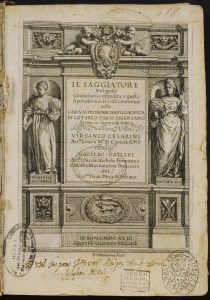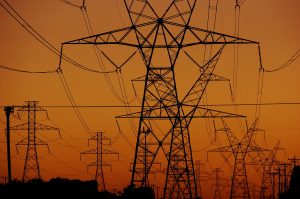
One of Galileo’s most famous phrases states that the book of nature is written in mathematical language: “Philosophy is written in that great book that is continually open before our eyes, which I call the universe. But it cannot be deciphered if we do not first understand the language and know the letters in which it is written. It is written in mathematical language, its symbols being triangles, circles and geometrical figures. Without these means it is humanly impossible to understand a word: without them we wander vainly through a dark labyrinth”. The phrase is from his book Il Saggiatore, published in Rome in 1623 and considered a pioneer of the scientific method (see also the entry Galileo and the mathematics of the universe). From my point of view the quote says much less than what it later came to mean. In fact, in his sentence Galileo explicitly refers to triangles, circles and geometric figures, which obviously serve to describe some physical phenomena; he himself would demonstrate in 1638, in his last work, that the trajectory followed by a cannonball is a parabola (in the absence of friction). Galileo, however, was unable to recognise what shape a chain or flexible cable attached at its ends would take in a free fall; a curve that ended up being called a catenary. Galileo wrongly thought, as did Leonardo da Vinci, that it was also a parabola.
Galileo’s phrase, even in the year he wrote it (1623), is a somewhat naive statement that ensures that certain curves serve to properly describe some physical phenomena: thus, the language to which Galileo refers would be the old geometry of the Greeks. But Galileo wrote that sentence at the right time (or almost), because it happened that a few decades later the discovery of infinitesimal calculus took place, the tool that was going to give such a literal, deep and transcendent meaning to Galileo’s sentence as he would have never imagined. And the fact is that the language of nature is mathematical, as Galileo stated, only that its characters are not triangles, circles and geometric figures, but those provided by infinitesimal calculus: derivatives, integrals and differential equations. Without infinitesimal calculus, modern physics would not exist, and in fact, not by chance, Newton, one of the inventors of calculus, is also one of the fathers of modern physics.

Here is one example of the many available to illustrate this fact. This is the above-mentioned problem of the catenary: what is the curve formed by the free fall of a chain or flexible cable attached at its ends? As I wrote before, the problem already interested Leonardo da Vinci and Galileo himself, who thought, wrongly, that it must be a parabola. Both of them lacked the necessary tool to solve it: infinitesimal calculus, which allows a precise formulation of that physical problem in mathematical language, as a previous step to its resolution. Jakob Bernoulli, the first mathematical disciple of Leibniz (the other inventor of the infinitesimal calculus), launched in 1690 a challenge to the scientists of the moment to solve the problem. The following year, the solutions provided by Leibniz, Huygens and Johann Bernoulli, Jakob’s younger brother, were published in the Acta Eruditorum, all of which correctly identified the catenary as the hyperbolic cosine. Using Cartesian coordinates, we can call the points of the catenary curve \((x,y(x))\) -to simplify, we will assume that the points by which the chain is attached are at the same height-: their identification is equivalent to determining the function \(y(x)\) whose graphic representation corresponds to that curve.
The laws of physics and the concepts of calculus allow the formulation of an equation for the function that solves the catenary problem: this equation takes the form
$$ a^2(y’)^2-y^2+a^2=0,$$
where \(y’\) is the derivative of the function \(y\) while \(a\) denotes a constant characteristic of the hanging wire – to be precise: \(a\) is the quotient between the horizontal component of the tension, which is constant, and the weight per length unit. An equation like the one above, where a function \(y\) and its derivative \(y’\) are linked, is called a differential equation. That this particular differential equation describes the solution to the catenary problem is a good example of how right Galileo was when he said that the book of nature is written in mathematical language, even though he could not imagine that such language would be that of infinitesimal calculus.
Naturally, to complete the solution of the catenary problem, the function behind this equation must be identified. This is not easy to do, but in this case it is possible, and what is obtained is the hyperbolic cosine, or in other words, the following combination of exponentials:
$$ y(x)=a\cosh \frac{x}{a}=a\frac{e^{x/a}+e^{-x/a}}{2}.$$
References
A.J. Durán, Crónicas matemáticas, Crítica, Barcelona, 2018.

Leave a Reply